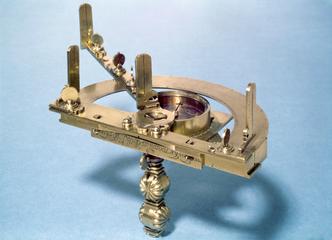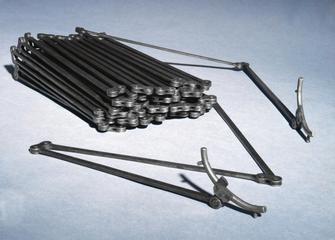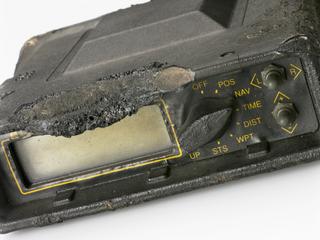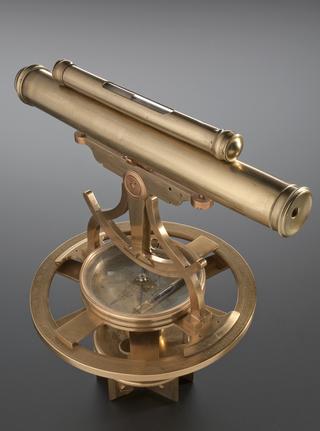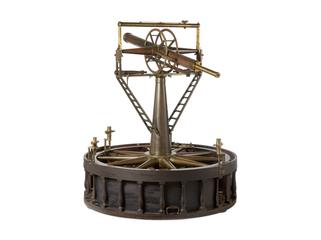
50-Foot tape measure with notebook, British, 1846-1860
- Made:
- 1846-1860
- maker:
- J Parkes and Son




Linen measuring tape, 50-foot, with notebook and pencil in leather case, by J. Parkes & Son, Birmingham, England, 1846-1860. Inscribed on punched leather 'J.PARKES & SON/ [Royal Coat of Arms] /REGISTERED/FEBY 14TH 1846/SOLID - LEATHER/50 Ft.'
Length may be measured directly with a chain, steel band, or tape, or it may be measured optically. The method adopted by the surveyor depends largely on the degree of accuracy required and the nature of the terrain. In the case of base measurement an exceedingly high standard is called for but in simple land surveys great accuracy is seldom required and quite crude methods of linear measurement are often acceptable.
In about 1620 Edmund Gunter recommended the use of a chain four poles, i.e. 22 yards, in length and made up of 100 links. His proposal was adopted and this method of measurement came to be used widely in the British Isles. As a result, the word chain came also to mean a standard of length equal to 22 yards.
The chain was the only accurate flexible means of measuring length in the field until the first half of the nineteenth century when the printed linen tape came into use for the measurement of short distances. Tape could not challenge chain for longer distances, however, until the introduction of the steel tape.
This 50-foot linen measuring tape was made in 1846 and has a book-form leather case which includes a notebook and pencil.
Details
- Category:
- Surveying
- Object Number:
- 1954-250
- Materials:
- linen (textile), leather, paper (fibre product), brass (copper, zinc alloy), carbon fibre, wood (unidentified), ivory and iron
- Measurements:
-
overall: 40 mm x 102 mm x 100 mm, .18kg
- type:
- tape measure
- credit:
- National Maritime Museum

